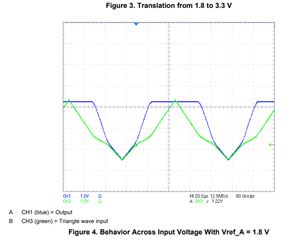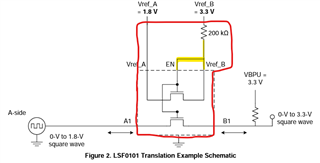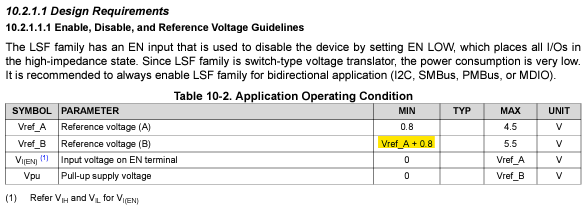Other Parts Discussed in Thread: LSF0204
Team,
I'm surprised to not find more data on the saturation level of the input-output switch of this family of level shifters in the datasheet. from https://www.ti.com/lit/an/slva675b/slva675b.pdf figure4 . I'm guessing that in the HW configuration described figure 2 of the same document, I'm guessing that the opening of the switch starts around 0.8V to end around 1.3V: am I correct ?
Is there a way to find this information anywhere else?




